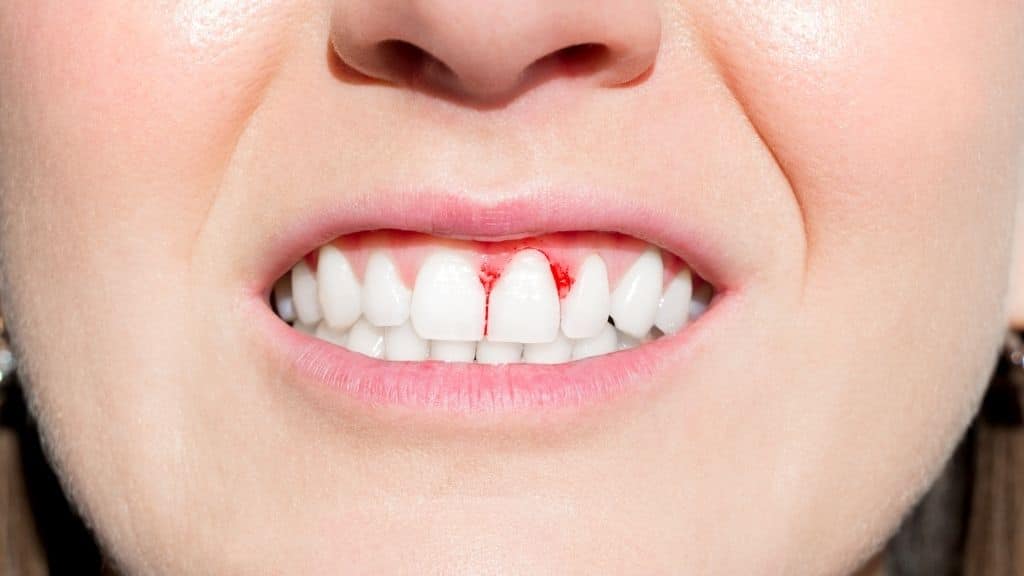
Have you noticed that your gums are bleeding and swollen? Has someone told you that you may have gum disease? (Also called periodontal disease).
Then it may be time for you to seek effective gum disease treatment in Toronto to help preserve the health of your mouth, teeth, and general wellbeing.
Gum disease is caused by the bacteria that’s found in plaque. As this plaque hardens into tartar and more plaque forms, the gum line becomes inflamed. Over time, this can affect the surrounding bone that supports your teeth. That’s why there are a number of different stages to gum disease, from gingivitis to advanced periodontitis.
Catching the warning signs early is a must, and these include bleeding gums, swollen and tender gums, bad breath, loose teeth, increased sensitivity to hot or cold foods, and pain when you’re chewing your food.

Your gum's ability to recover from periodontal gum disease is based on the severity of the disease progression and the level of damage done to your gums. Realistically, your gums won't go back to the way they were before periodontitis.
However, on a positive note, there are many treatment options to explore in effort to heal your gums — from even the most detrimental stages of periodontal gum disease.
The more extreme and damaging the periodontitis, the longer you can usually expect the treatment process to take. You can also anticipate a more thorough and detailed dental treatment in severe vs milder cases.
At Twogether Dental, Dr. Iliana Paparisto takes a whole-body approach to help find the treatment plan that best aligns with your overall health and needs.
Twogether Dental is no judgment zone. We're here to support you in regaining healthier gums and feeling more like yourself. The following are recognized treatments to help your gums recover from periodontal gum disease.
Scaling and root-planing (SRP) is a common procedure to take place in the early stages of periodontal gum disease recovery. This is a non-surgical step that involves your dentist scraping and removing build-ups of plaque and tartar from your teeth and beneath the gum line with specialized tools such as manual hand instruments, ultrasonic instruments, etc.
Planing involves smoothening the surface of rough areas to help prevent bacteria, plaque, and tartar from re-clinging underneath your gum line. This also helps take down the inflammation of your gum tissue.
This is to help your gums recover and reattach to your teeth's newly clean and smooth surfaces. Based on the results of this process, further treatment will be decided.
In more difficult stages of periodontitis, your gum tissue may reject fitting correctly around your teeth, despite scaling and planing. When this happens, it's likely because the gum's deep pocket areas are struggling to stay clean from consequences of gum disease like loose teeth and gum recession.
Periodontal pocket reduction — or flap surgery — is when your dentist folds back gum tissue to clean out any infectious bacteria and smoothen areas of damaged bone. The goal here is to get your gums to reattach to healthy bone.
Periodontal gum disease causes gum recession, which can lead to root exposure. Fortunately, this can thankfully covered and protected by gum grafts. These grafts are taken from gum tissue on your palate or elsewhere in your mouth. The purpose of this method is to help decrease gum and root sensitivity all while defend from decay, the acceleration of gum recession and further bone damage.
Laser therapy is very new to the realm of periodontal gum disease. It has already shown strong potential for suffering patients. This treatment involves a laser targeted onto the area of disease with precision. It's known to be minimally invasive and offer a shorter recovery time.
The examples above are known treatments used to can help your gums recover from periodontal gum disease.
We understand that experiencing periodontitis can be very jarring, scary and painful. Feeling fear of judgment for your periodontal gum disease can add another layer of stress and upset to the situation.
Don't let that stop you from getting treatment, especially before it's too late and you don't have any teeth left! Dr. Iliana Paparisto is here to guide you through the treatment and recovery process, regardless of if you have gingivitis or advanced gum disease.

Here at Twogether Dental, we provide specialist periodontitis treatment that’s tailored to the stage of gum disease you’re suffering from.
Early stages (gingivitis) can often be treated with professional cleaning that removes the buildup of plaque and tartar. For more advanced cases, our periodontal disease dentist will perform advanced root planning and scaling to treat the gum infection and diseased areas. However, our treatments don’t just stop there.
We’ll also help make sure your gum disease doesn’t return by sharing at-home prevention techniques and scheduling regular appointments at our clinic. With us, your teeth are in the best possible hands.